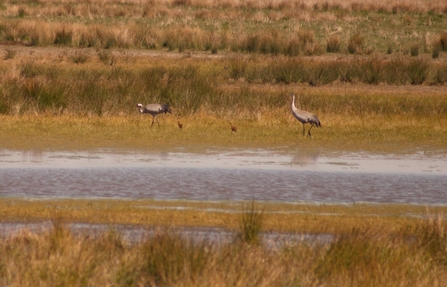In 2020, cranes returned to breed in the Lincolnshire Fens for the first time in around 400 years. This year, they returned the Lincolnshire Wildlife Trust’s Willow Tree Fen nature reserve in January and a monitoring scheme was put in place to protect the birds and watch over the breeding activities from a safe distance.
Staff and volunteers were delighted to see that two chicks had hatched this year and both parents were starting to feed the chicks and move the family further from the nest to forage for food. Sadly, that celebration has quickly turned to sadness with the news that both chicks have now perished, believed to be at some point between lunch time on Bank Holiday Monday and the morning of Tuesday 4th May.
The cause of the failure is not known but the disappearance of the chicks follows a period of very wet and cold weather over the Bank Holiday weekend and with newly hatched chicks, this, and a lack of available food, may have been the reason. Similarly, young cranes are very vulnerable in their first few weeks and may have fallen victim to a predator.

